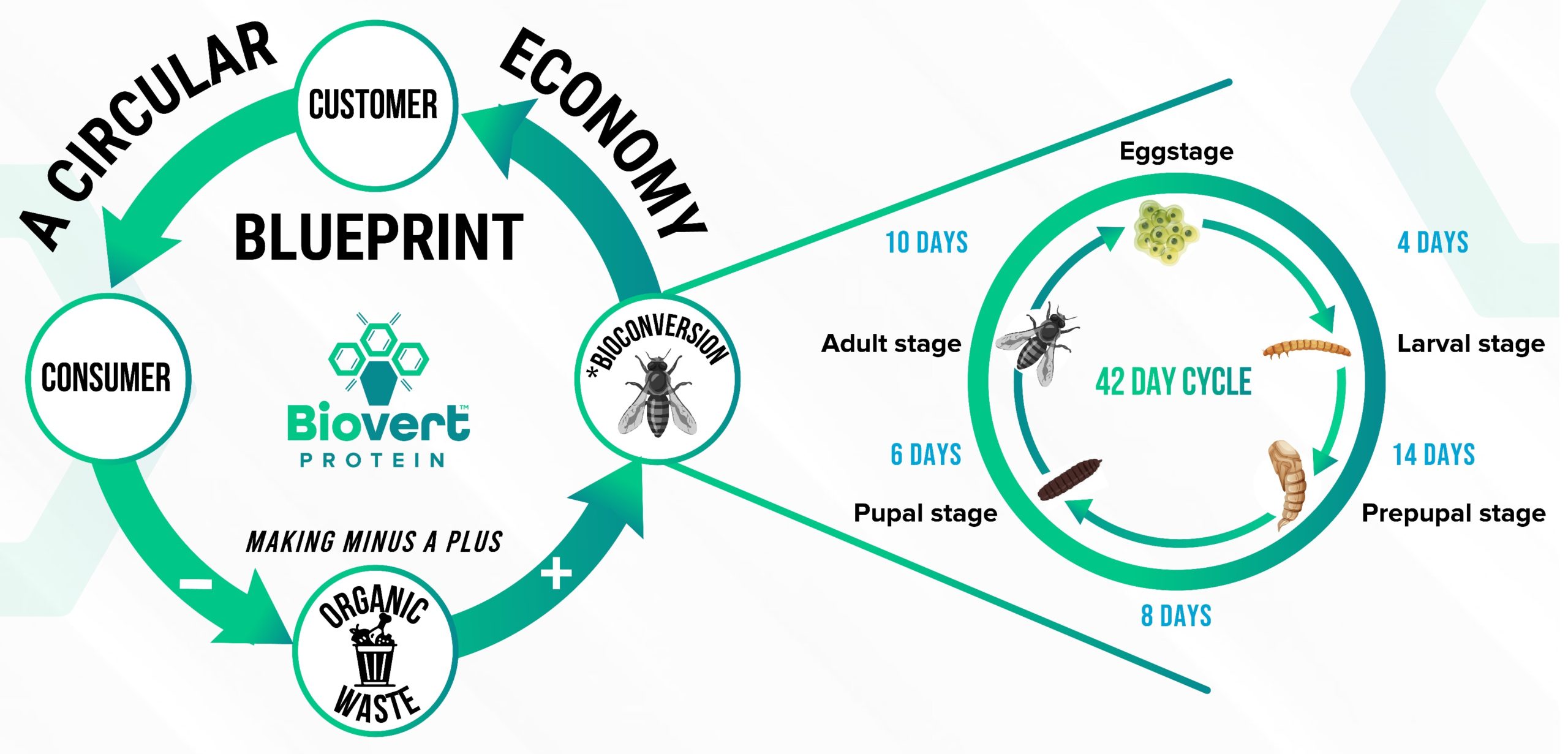An optimized life-cycle for waste reduction and biomass production
- The BSF life cycle varies between environments (temperature, humidity, light intensity, quality and quantity of available food).
- The females lay approx. 500 eggs and they die soon after oviposition.
- Eggs have an ovoid shape, and are about 1 mm long and they change from beige to yellow/beige colour during the incubation period, which lasts from a little bit more than 4 days.
- As soon as larvae have hatched, they use surrounding organic matter as a food source. The duration of the larval stage lasts approx. 2 weeks.
- 1 Kg of eggs yields 7 tons of larvae and can eat 25 tons of organic waste in a week.
- The prepupal stage is characterized by a marked colour change from beige to dark brown, they will migrate out of substrate as old larvae cease feeding prior to pupation .
- Generally, the metamorphosis is completed within 2 weeks. Mating takes place about 2 days after the emergence of the imago and another 2 days are needed before egg laying. An imago lives only 5 to 14 days.

- Regarding protein production, BSF technology makes land use (m²) 100 times less than cultivating plant crop growing or animal meat production.
